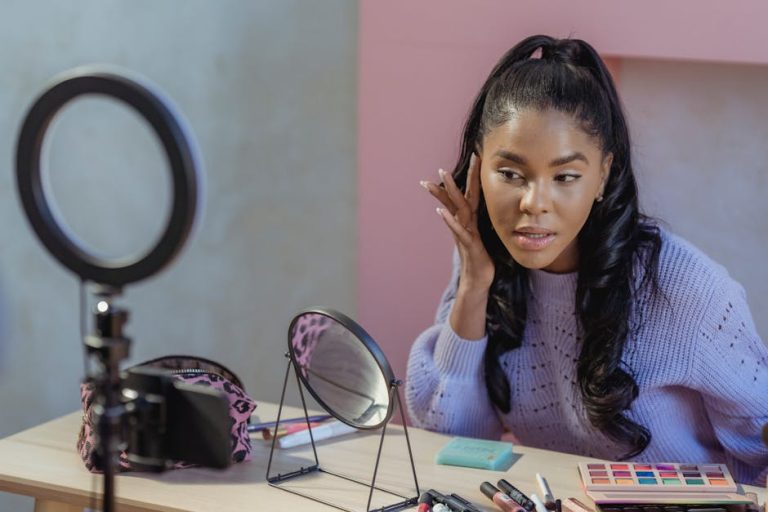
The Role of Affiliate Marketing in the Beauty Industry
The beauty industry is a colossal market, teeming with innovation and ever-evolving trends. In recent years, affiliate marketing has emerged as a pivotal strategy for brands looking to expand their reach and enhance sales. This blog post delves into the intricate role affiliate marketing plays in the beauty sector, highlighting its benefits, challenges, and practical tips for success.
Understanding Affiliate Marketing
Affiliate marketing is a performance-based marketing strategy where businesses reward affiliates for bringing traffic or customers through the affiliate’s marketing efforts. Affiliates can be individuals or companies that promote products through various channels, such as websites, social media, and email marketing.
Why the Beauty Industry Embraces Affiliate Marketing
The beauty industry, valued at over $511 billion in 2023 and projected to exceed $716 billion by 2025, is a fertile ground for affiliate marketing. Here’s why:
- Wide Audience Reach: Beauty products appeal to a diverse audience, making them ideal for affiliate marketing. Influencers and bloggers can target specific demographics, from teens to mature adults.
- High Consumer Engagement: The beauty sector thrives on high consumer engagement, with users frequently seeking reviews, tutorials, and product recommendations. Affiliates can leverage this by creating compelling content that drives sales.
- Frequent New Releases: Beauty brands constantly release new products, providing affiliates with fresh content to promote, which keeps their audience engaged and returning.
The Benefits of Affiliate Marketing for Beauty Brands
For beauty brands, affiliate marketing offers numerous benefits:
Cost-Effective Marketing
Unlike traditional advertising, affiliate marketing is performance-based, meaning brands only pay for actual sales or leads generated. This makes it a cost-effective strategy, particularly for emerging brands with limited budgets.
Increased Brand Awareness
Affiliates, especially beauty bloggers and influencers, help amplify brand visibility. Their endorsement can introduce brands to new audiences, boosting recognition and credibility.
Improved SEO and Online Presence
Quality backlinks from reputable affiliates can enhance a brand’s SEO, improving search engine rankings and driving organic traffic to the brand’s website.
Challenges in Beauty Affiliate Marketing
Despite its advantages, affiliate marketing in the beauty industry does come with challenges:
Finding the Right Affiliates
Choosing the right affiliates who align with the brand’s values and target audience is crucial. Brands must conduct thorough research to ensure potential affiliates have genuine influence and engagement with their audience.
Maintaining Brand Control
Brands must balance empowering affiliates with creative freedom while ensuring consistent brand messaging. This requires clear guidelines and communication.
Tracking Performance
Accurate tracking of affiliate performance can be complex. Brands need robust tools and platforms to monitor affiliate-driven sales and calculate commissions accurately.
Successful Affiliate Marketing Strategies for Beauty Brands
To harness the full potential of affiliate marketing, beauty brands should consider the following strategies:
Leverage Influencer Partnerships
Collaborate with beauty influencers who have a dedicated following and strong engagement rates. Influencers can create authentic content, such as tutorials and reviews, that resonates with their audience.
Utilize Affiliate Networks
Affiliate networks can connect brands with a wide range of affiliates. These platforms often provide tracking tools and analytics to measure the success of affiliate campaigns.
Create Compelling Content
Encourage affiliates to produce high-quality content, such as blog posts, videos, and social media posts, that highlight the unique features and benefits of the beauty products.
Case Studies: Affiliate Marketing Success in the Beauty Industry
Example 1: Glossier
Glossier, a skincare and cosmetics brand, has successfully utilized affiliate marketing to expand its reach. By partnering with beauty bloggers and influencers, Glossier increased its online presence and built a loyal customer base.
Example 2: Sephora’s Beauty Insider Program
Sephora’s affiliate program leverages its Beauty Insider community, allowing members to earn points and rewards through referrals. This strategy has enhanced customer engagement and loyalty.
Actionable Tips for Beauty Brands
Here are some actionable tips for beauty brands looking to optimize their affiliate marketing efforts:
Set Clear Goals and KPIs
Define specific goals and key performance indicators (KPIs) for your affiliate program. Whether it’s increasing sales or boosting website traffic, having clear objectives will guide your strategy.
Provide Affiliates with Resources
Equip your affiliates with the necessary resources, such as product samples, promotional materials, and exclusive discounts, to help them create engaging content.
Monitor and Analyze Performance
Regularly track the performance of your affiliates using analytics tools. Analyze data to identify top-performing affiliates and optimize strategies for better results.
Conclusion
Affiliate marketing plays an integral role in the beauty industry, offering brands a powerful tool to reach new audiences and drive sales. By understanding the benefits and challenges, and implementing effective strategies, beauty brands can thrive in this dynamic market. As the beauty industry continues to grow, affiliate marketing will undoubtedly remain a key component in brand strategies, driving innovation and success.
Do you need your own Affiliate Marketing Expert? Try the chatbot for free



